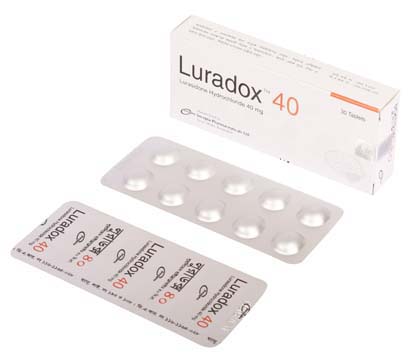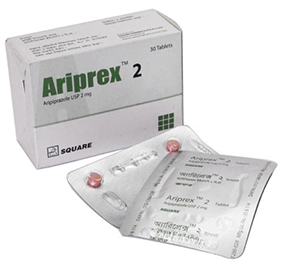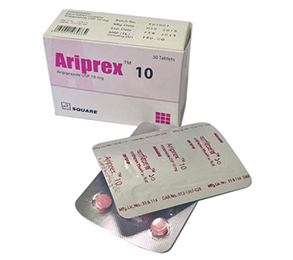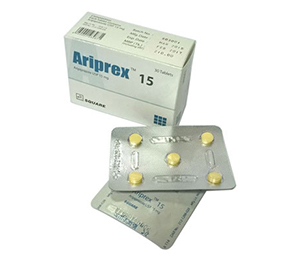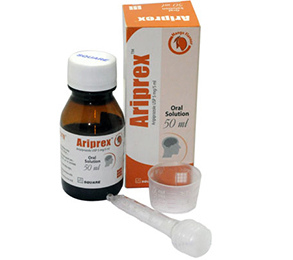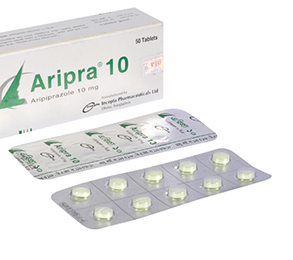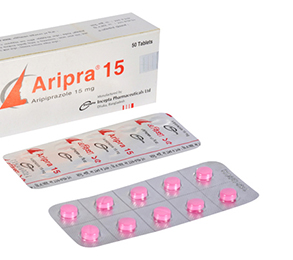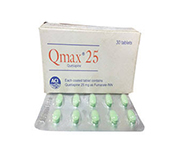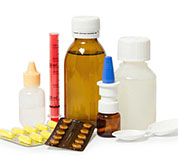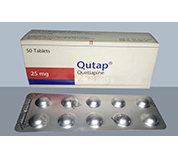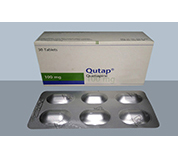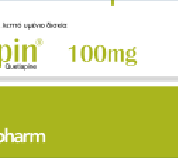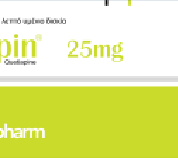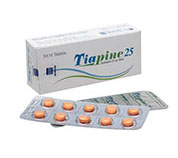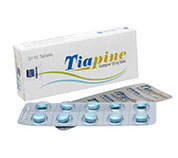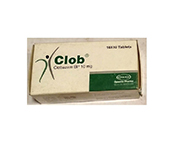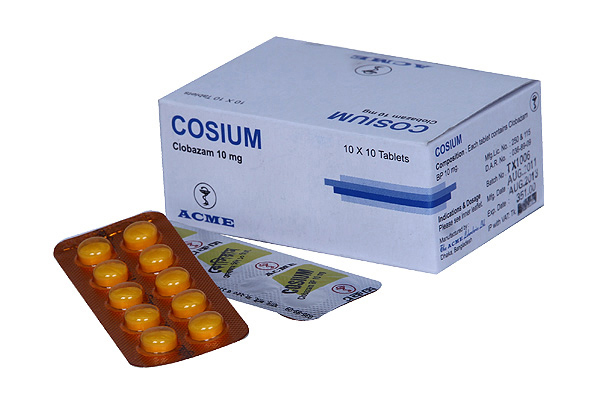Luradox 40 Tab 1 Pc
Alternative products
Lurasidone
Indications
Lurasidone Hydrochloride is an atypical antipsychotic. This is used for the treatment of: Schizophrenia, Depressive episodes associated with Bipolar I Disorder (bipolar depression), as monotherapy and as adjunctive therapy with lithium or valproate.
Pharmacology
The efficacy of Lurasidone in schizophrenia could be mediated through a combination of central Dopamine D2 and Serotonin 5HT2A receptor antagonism.
Dosage & Administration
Schizophrenia-
- Starting Dose: 40 mg once daily
- Recommended Dose: 40 mg to 160 mg once daily
Bipolar Depression-
- Starting Dose: 20 mg once daily
- Recommended Dose: 20 mg to 120 mg once daily
Lurasidone should be taken with food. Administration with food substantially increases the absorption of Lurasidone.
* চিকিৎসকের পরামর্শ মোতাবেক ঔষধ সেবন করুন'
Interaction
The Lurasidone dose should be reduced to half of the original level when used concomitantly with moderate inhibitors of CYP3A4 (e.g., Diltiazem, Atazanavir, Erythromycin, Fluconazole, Verapamil, etc.). If Lurasidone is used concomitantly with a moderate CYP3A4 inducer, it may be necessary to increase the Lurasidone dose.
Grapefruit: Grapefruit and grapefruit juice should be avoided in patients taking Lurasidone, since these may inhibit CYP3A4 and alter Lurasidone concentrations.
Contraindications
Hypersensitivity. Concurrent administration of strong CYP3A4 inhibitors (eg, Ketoconazole). Concurrent administration of strong CYP3A4 inducers (eg, Rifampin). Dementia-related psychosis.
Side Effects
Somnolence, akathisia, extrapyramidal symptoms, and nausea.
Pregnancy & Lactation
Pregnancy Category B. Lurasidone should be used during pregnancy only if the potential benefit justifies the potential risk to the fetus. Patient should be advised not to breast-feed an infant if they are taking Lurasidone.
Precautions & Warnings
Cerebrovascular adverse reactions in elderly patients with dementia-related psychosis: Increased incidence of cerebrovascular adverse events (e.g., stroke, transient ischemic attack).
Neuroleptic malignant syndrome: Manage with immediate discontinuation and close monitoring.
Tardive dyskinesia: Discontinue if clinically appropriate.
Metabolic changes: Atypical antipsychotic drugs have been associated with metabolic changes that may increase cardiovascular/cerebrovascular risk. These metabolic changes include hyperglycemia, dyslipidemia, and weight gain.
Hyperglycemia and diabetes mellitus: Monitor patients for symptoms of hyperglycemia including polydipsia, polyuria, polyphagia, and weakness. Monitor glucose regularly in patients with diabetes or at risk for diabetes.
Dyslipidemia: Undesirable alterations have been observed in patients treated with atypical antipsychotics.
Weight Gain: Gain in body weight has been observed. Monitor weight.
Hyperprolactinemia: Prolactin elevations may occur.
Leukopenia, neutropenia and agranulocytosis: Perform complete blood counts (CBC) in patients with a pre-existing low white blood cell count (WBC) or a history of leukopenia or neutropenia. Consider discontinuing Lurasidone if a clinically significant decline in WBC occurs in the absence of other causative factors.
Orthostatic hypotension and syncope: Dizziness, tachycardia or bradycardia, and syncope may occur, especially early in treatment. In patients with known cardiovascularor cerebrovascular disease, and in antipsychotic-naïve patients, consider a lower starting dose and slower titration.
Use in Special Populations
Moderate and Severe Renal Impairment: Recommended starting dose is 20 mg per day, and the maximum recommended dose is 80 mg per day .
Moderate and Severe Hepatic Impairment: Recommended starting dose is 20 mg per day. The maximum recommended dose is 80 mg per day in moderate hepatic impairment and 40 mg per day in severe hepatic impairment.
Therapeutic Class
Atypical neuroleptic drugs
Storage Conditions
Protect from light and moisture, store below 30° C. Keep out of the reach of children.
- Type Tablet
- Tag
- Morbi leo risus
- Porta ac consectetur ac
- Vestibulum at eros
